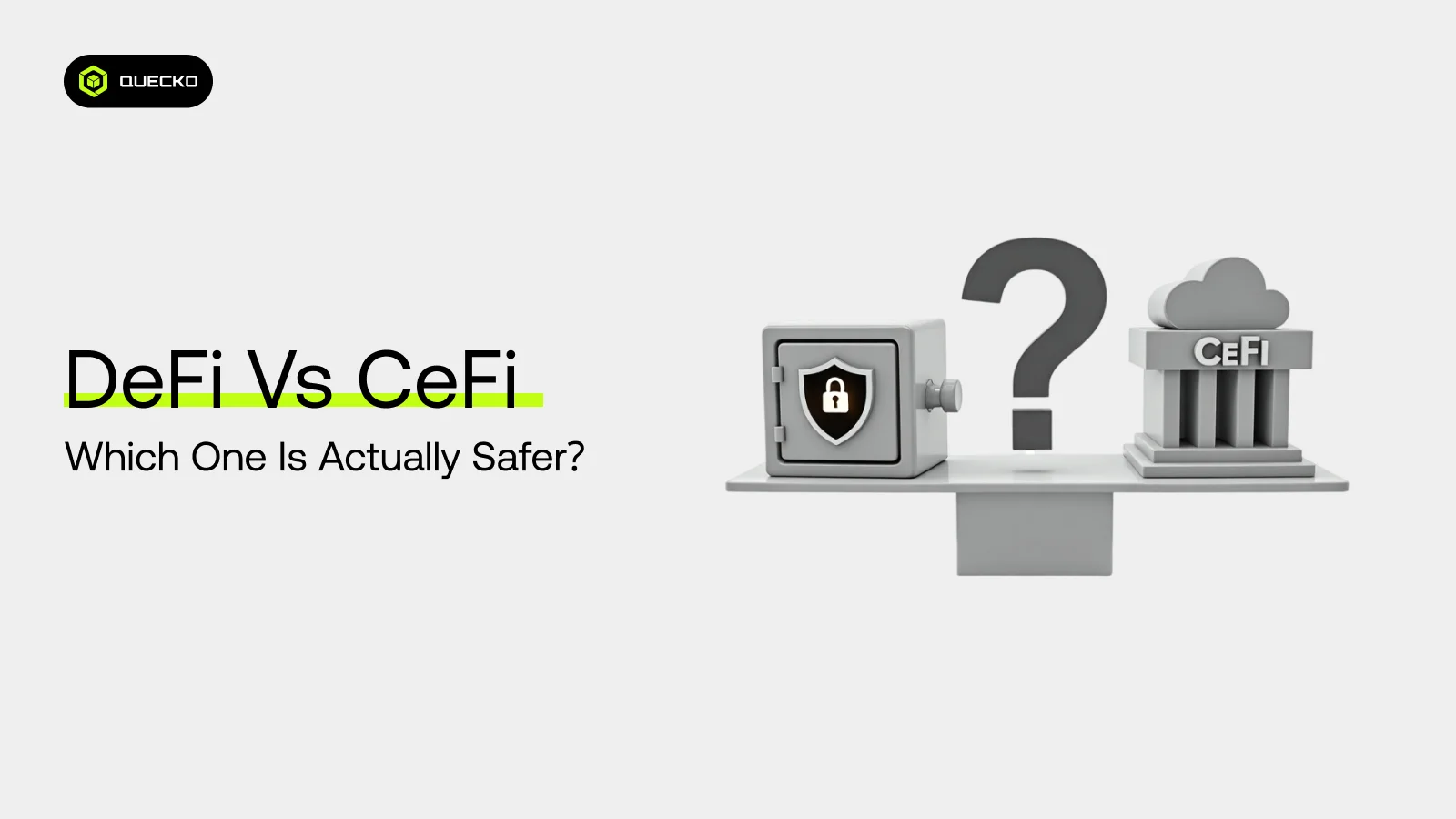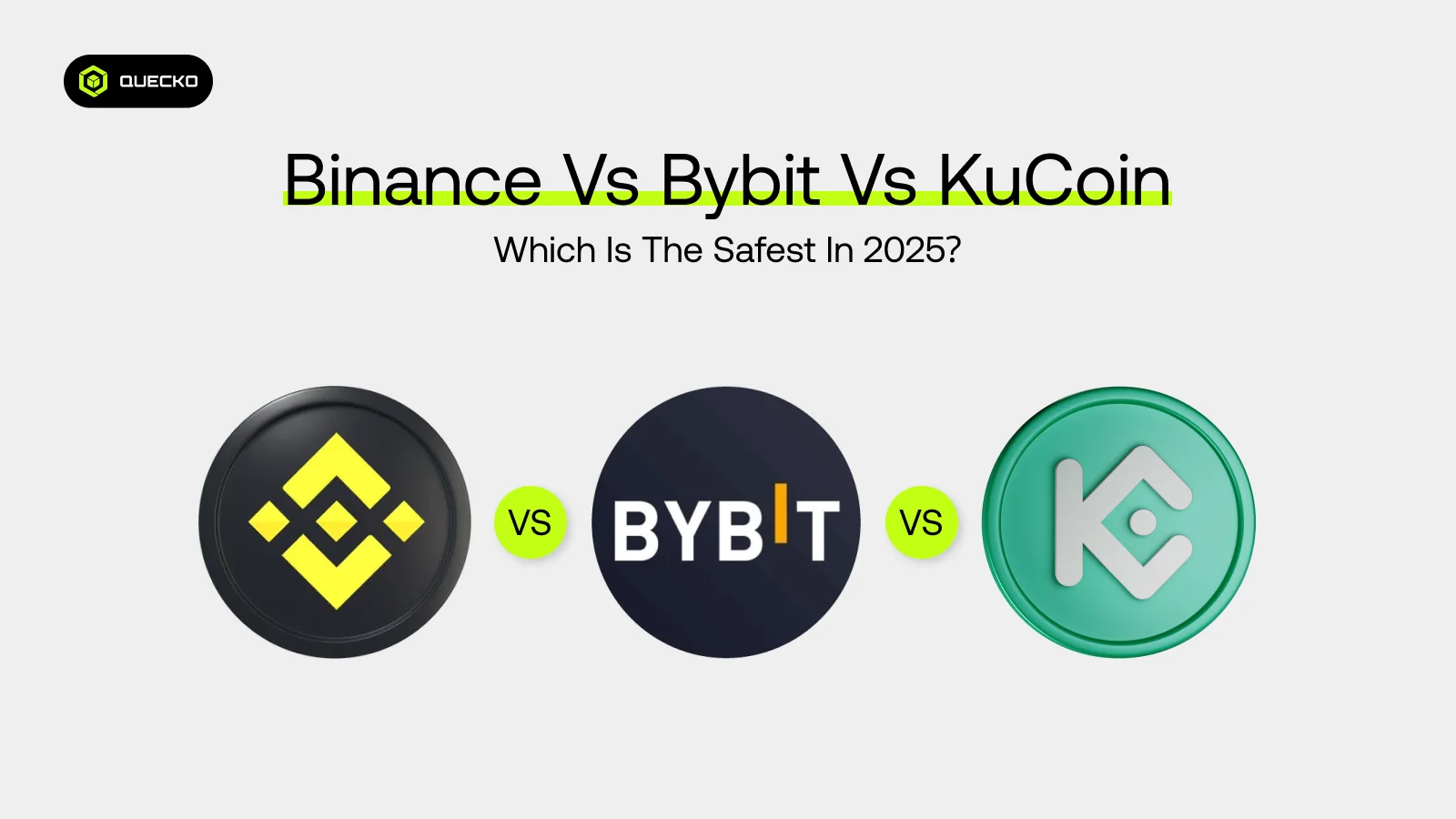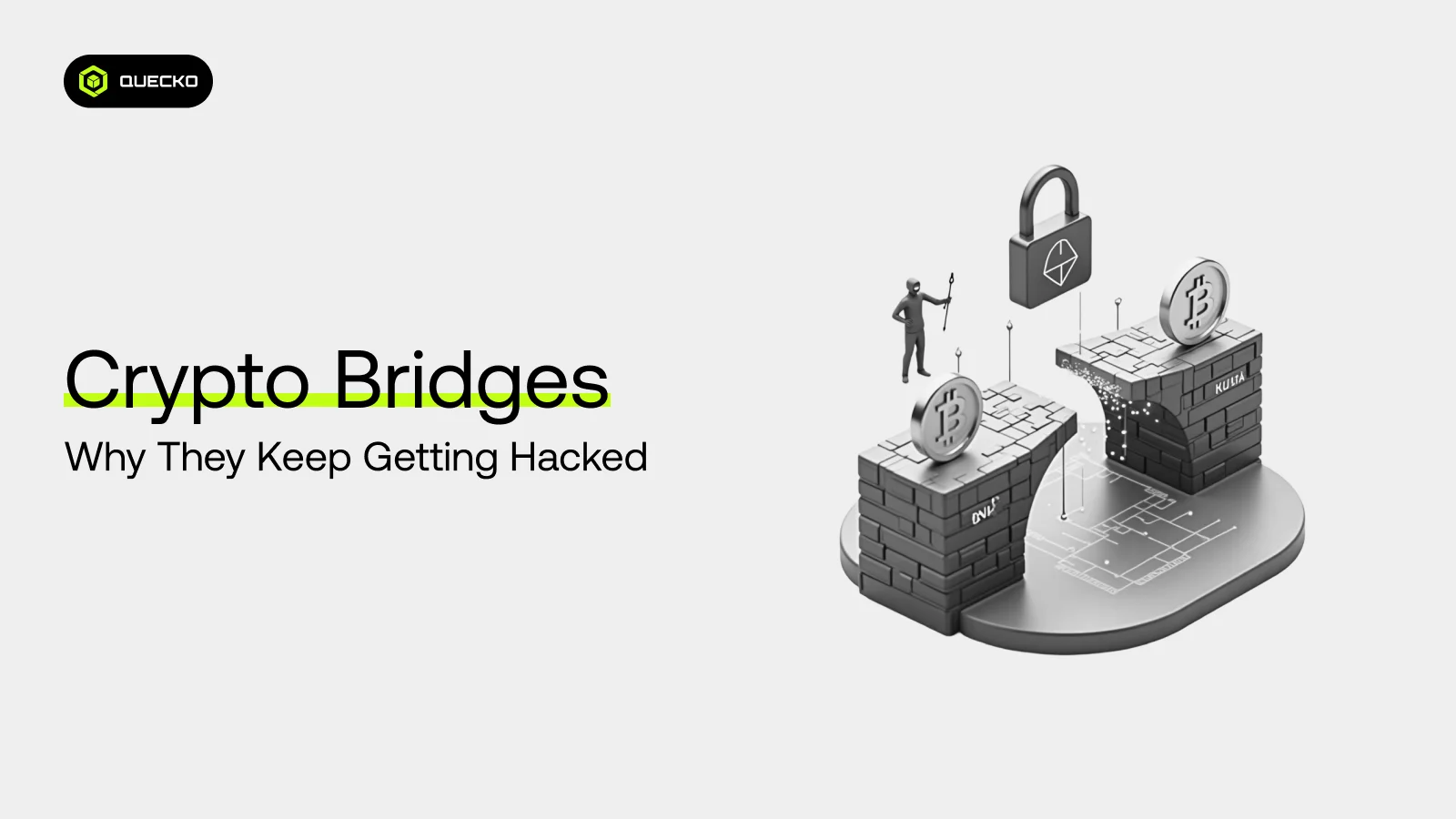The Ultimate Guide to Consensus Algorithms in Blockchain
Unlock the secrets of blockchain consensus algorithms! Dive deep into PoW, PoS, DPoS, and PBFT, exploring their strengths, weaknesses, and future trends. Learn how these mechanisms ensure security, scalability, and decentralization, driving blockchain’s revolutionary potential.
Ever wondered how blockchain ensures trust without a central authority? This guide unravels the secrets behind blockchain consensus mechanisms, the backbone of decentralized networks. From Proof of Work (PoW) to cutting-edge hybrid models, learn how these mechanisms drive security, decentralization, and efficiency while managing the concentration of power among participants. Discover the pros, cons, and future trends shaping the blockchain landscape, including the role of the consensus process and voting process in achieving agreement without intermediaries.
Blockchain technology has revolutionized how we think about trust and decentralization, but at the core of every successful blockchain lies one critical element—blockchain consensus algorithms. Without consensus, blockchain would be nothing more than a chaotic, uncoordinated ledger. This blog serves as a comprehensive deep dive into consensus mechanisms, exploring why they matter, how they function, and the future of decentralized coordination. Whether it’s the mining process in Bitcoin and Ethereum, the calculation of block rewards, or the execution of smart contracts, consensus algorithms determine the reliability and efficiency of blockchain networks.
As blockchain grows, concerns about its carbon footprint remain, especially regarding energy-intensive mechanisms like PoW. Innovations in eco-friendly consensus models aim to balance security and sustainability. Whether you’re a developer, enthusiast, or business leader, this is your ultimate resource to master blockchain’s core technology and navigate the future of decentralized systems.
Why Consensus Algorithms are the Pillars of Blockchain
In centralized systems, trust is placed in intermediaries such as banks or governments. However, blockchain removes intermediaries, forcing networks to rely on consensus to validate transactions. Consensus ensures:
- Security: Safeguarding the Blockchain Ecosystem
At the heart of blockchain’s appeal lies its robust security. Consensus algorithms are designed to protect against double-spending—an issue where the same digital token could be spent more than once—and shield the blockchain platform from malicious actors. By requiring a majority agreement among network participants, these algorithms ensure that only legitimate transactions are added, strengthening trust across both permissioned blockchains and public networks. This meticulous validation process supports the adoption of blockchain technology in various industries, making it essential for the success of any blockchain project. Additionally, factors like transaction fees influence the efficiency and accessibility of blockchain networks, reinforcing the need for optimized consensus mechanisms that balance security with cost-effectiveness.
- Consistency: Synchronizing the Global Ledger
Imagine a world where every participant in a large network has an identical, up-to-date record of all transactions. Consensus algorithms make this possible by ensuring faster transaction processing and maintaining the validity of transactions across the decentralized system, no matter how geographically distributed the nodes are. This synchronization guarantees that every user, miner, or block producer operates with the same data, eliminating discrepancies and fostering a high level of trust in the system’s reliability. By detecting and handling faulty nodes, these mechanisms protect against inconsistencies and potential attacks, ensuring the security of the blockchain.
As energy concerns grow, integrating renewable energy resources into blockchain infrastructure can improve sustainability without compromising efficiency. This critical component of blockchain technology is essential for scalability and security, and this comprehensive guide explores its role in maintaining decentralized trust and stability.
- Fault Tolerance: Resilience in Adversity
In any large network, failures are inevitable—whether due to technical glitches or malicious attempts to disrupt the system. Consensus algorithms enhance network security by providing fault tolerance, ensuring that the blockchain remains operational even during network partitions or unexpected disruptions. By establishing agreements among nodes, these protocols enable private blockchains and public networks to maintain trust and functionality.
Different blockchain protocols mitigate various types of attacks, allowing the system to resist threats like Sybil or 51% attacks, where adversaries attempt to manipulate the ledger by controlling excessive mining power. To address these challenges, developers continue to design innovative solutions that enhance decentralization, efficiency, and resilience.
Additionally, understanding these mechanisms provides valuable insights for optimizing blockchain infrastructure, ensuring its adaptability for diverse applications. As the industry moves forward, incorporating sustainable practices into consensus models will be crucial in balancing security with environmental impact.
- Decentralization: Empowering a Trustless Network
One of blockchain’s most revolutionary aspects is its ability to eliminate centralized control. Consensus algorithms distribute decision-making power across entire networks, ensuring that decentralized systems remain functional without intermediaries like banks or governments. In PoW networks, miners compete to solve complex cryptographic algorithms, securing transactions while maintaining a high level of security.
Various models, including the hybrid consensus mechanism, balance efficiency and decentralization by combining multiple consensus protocols to optimize network performance. By achieving a common agreement among nodes, blockchain ensures reliability, enabling seamless operations for any decentralized application. Without these mechanisms, networks would face blockchain forks, leading to fragmentation and inconsistencies that could jeopardize the system’s integrity.
Consensus mechanisms also play a key role in aligning with business objectives, ensuring sustainability while adhering to the decentralized ethos. As blockchain evolves, innovative solutions continue to refine security, scalability, and fairness, making decentralized systems more viable across industries.
The Consensus Dilemma: Why Is Agreement Difficult in Blockchain?
Reaching agreement in distributed networks is inherently challenging due to the Byzantine Generals Problem. This classic computer science dilemma highlights the difficulty of achieving consensus when some participants might act maliciously or fail to communicate. Blockchain cryptographic techniques enhance blockchain security, ensuring that transactions are verified and tamper-proof. Consensus algorithms help mitigate these risks, especially in consortium blockchains, where a predefined set of nodes maintain trust while ensuring decentralized governance.
Utilizing cryptocurrency wallets for secure transactions enables individuals and businesses to safeguard digital assets effectively. Additionally, leveraging the advantages of pool mining allows participants to combine computational resources, improving efficiency and reward distribution. As blockchain adoption expands, companies seek enterprise solutions that align with their business goals, leveraging decentralized technologies for scalability and reliability.
For those entering the digital asset space, a crypto trading guide provides essential strategies for navigating volatility while ensuring secure data practices. By applying actionable insights, developers and investors can optimize blockchain technology, ensuring sustainability, security, and trust across decentralized networks.
Understanding the Components of Consensus Algorithms
To fully grasp how consensus mechanisms operate, it’s essential to understand their core components and how they contribute to the security, efficiency, and decentralization of blockchain networks.
Block Proposers: These are nodes responsible for suggesting new blocks to be added to the chain. Their primary function is to compile valid transactions from the network into a proposed block. Depending on the consensus algorithm, block proposers may be chosen based on computational power, stake ownership, or other predefined selection criteria. In Proof of Work (PoW) systems, miners act as block proposers, solving complex cryptographic puzzles to propose a new block. In Proof of Stake (PoS) and similar models, validators are elected or randomly assigned based on their stake or reputation.
Validators: Validators play a crucial role in ensuring the integrity of the blockchain. Their function is to verify the legitimacy of proposed blocks before they are added to the chain. They check transaction details, confirm cryptographic proofs, and ensure compliance with the consensus rules. Different consensus mechanisms, such as Delegated Proof of Stake (DPoS) and Byzantine Fault Tolerance (BFT)-based models, have distinct validator selection processes to optimize network security and efficiency.
Finality: Finality ensures that transactions are irreversible once they are included in the blockchain. This characteristic prevents double-spending attacks and guarantees that once a block is accepted by the network, it cannot be altered or removed. Some blockchain protocols, such as Ethereum’s Proof of Stake mechanism, achieve finality faster than traditional PoW networks by leveraging a validation process that confirms transactions based on stake rather than computational work.
Sybil Resistance: Sybil resistance is essential for maintaining decentralized trust in blockchain networks. Without adequate safeguards, malicious actors could create numerous fake nodes to manipulate consensus, allowing them to alter the ledger for personal gain. Different blockchain systems use various techniques to prevent Sybil attacks, including staking requirements, reputation-based validation, and computational work (as seen in PoW). These measures help ensure that only legitimate participants can influence the blockchain’s decision-making process.
Fork Resolution: Blockchain networks sometimes experience forks when multiple versions of the chain exist simultaneously. Forks can arise due to disagreements among nodes, network upgrades, or security breaches. Consensus mechanisms are designed to resolve forks by determining which chain should be accepted as the canonical version. In PoW-based networks like Bitcoin, the chain with the longest valid proof of work is typically chosen, while other models may rely on validator voting or predefined governance rules to reach consensus.
Each of these components plays a vital role in maintaining the security, stability, and fairness of blockchain ecosystems.
Classification of Consensus Algorithms
Consensus algorithms can be broadly classified into two categories:
- Proof-Based Algorithms – Nodes demonstrate computational work or stake to validate transactions.
- Voting-Based Algorithms – Nodes communicate and vote to reach consensus.
1. Proof-Based Consensus Algorithms
Proof of Work, popularized by Bitcoin, is one of the earliest and most widely recognized consensus mechanisms. It relies on miners who compete to solve complex mathematical puzzles, ensuring network security through computational effort.
How It Works:
- Miners engage in an intensive cryptographic competition, using vast computing power to solve puzzles.
- The first miner to successfully solve the problem earns the right to propose a new block.
- Other nodes in the network verify the solution and append the validated block to the blockchain.
Strengths:
- Highly secure and battle-tested: PoW is one of the most robust consensus mechanisms, having protected Bitcoin for over a decade.
- Resistant to tampering: Altering past transactions would require re-mining all subsequent blocks, making manipulation virtually impossible.
Drawbacks:
- Energy-intensive: PoW consumes immense computational power, leading to high electricity costs and concerns over sustainability.
- Susceptible to 51% attacks: If a single entity gains control of 51% of the network’s mining power, it can manipulate transactions and perform double-spending.
Use Cases: Bitcoin, Litecoin, and other cryptocurrencies reliant on secure decentralized verification mechanisms use PoW to maintain integrity.
Proof of Stake (PoS): Efficiency Through Economic Commitment
Proof of Stake (PoS) improves upon PoW by selecting validators based on their token holdings and willingness to lock assets in the network, drastically reducing energy consumption.
How It Works:
- Validators are chosen at random, weighted by their stake in the network.
- The selected validator proposes a new block.
- Other validators confirm the legitimacy of the block and reach consensus.
Strengths:
- Energy efficient: By eliminating intensive mining computations, PoS significantly reduces electricity consumption.
- Faster transaction times: Transactions are processed quicker since PoS avoids cryptographic puzzles, reducing congestion.
Drawbacks:
- Wealth concentration risk: Validators with higher stakes hold more influence, potentially leading to centralization concerns.
Use Cases: Ethereum 2.0, Cardano, and other blockchain networks seeking scalable and energy-efficient consensus mechanisms.
Delegated Proof of Stake (DPoS): Fast and Scalable
Delegated Proof of Stake (DPoS) introduces a democratic voting model where token holders elect representatives to validate transactions on their behalf, increasing speed and throughput.
How It Works:
- Token holders vote for a fixed number of delegates who act as validators.
- Elected delegates take turns producing blocks and securing the network.
- Voters can remove inefficient or underperforming delegates through a governance system.
Strengths:
- High throughput: DPoS enables significantly faster transactions per second, making it suitable for large-scale applications.
- Democratic process: Token holders actively participate in network governance, reinforcing decentralization.
Drawbacks:
- Centralization risk: Since only a few delegates control the network, it may become less decentralized over time.
Use Cases: EOS, Tron, and other blockchain platforms focused on high-speed execution.
2. Voting-Based Consensus Algorithms
Practical Byzantine Fault Tolerance (PBFT) is a consensus mechanism designed to achieve agreement among distributed nodes even in the presence of malicious actors. Unlike Proof of Work (PoW) or Proof of Stake (PoS), which rely on computational power or token holdings, PBFT leverages multiple rounds of voting to finalize transactions efficiently.
How It Works: PBFT operates through a structured process involving a primary node and multiple validating nodes. The primary node proposes a new block, initiating a sequence where participating nodes exchange messages to verify its legitimacy. The network progresses through three main phases—pre-prepare, prepare, and commit—ensuring all honest nodes agree on the transaction before finalizing it. Consensus is reached if at least two-thirds of the nodes validate the proposed block, leading to immediate finality, meaning transactions cannot be reversed or altered once added to the ledger.
Strengths:
- Low latency: PBFT offers near-instant transaction finality, eliminating the need for extensive computational efforts like PoW. This makes it ideal for enterprise applications requiring fast and reliable processing.
- High security: Unlike PoW-based systems that rely on mining power, PBFT protects the network by tolerating failures and ensuring consensus among honest nodes, making it resistant to attacks and fraudulent activities.
- Efficiency in permissioned networks: PBFT is particularly well-suited for private or consortium blockchains, where a known set of validators collaborate to maintain security without relying on economic incentives.
Drawbacks:
- Communication overhead: The protocol requires extensive messaging between nodes to maintain consensus. In large networks, this leads to scalability limitations, as higher participation increases computational and bandwidth requirements.
- Limited applicability for public blockchains: Since PBFT is designed for environments where validators are pre-selected, it is more common in permissioned systems rather than fully decentralized public networks.
Use Cases: PBFT is widely used in enterprise-level blockchain solutions due to its efficiency in environments that prioritize high throughput and transaction security. One of its most notable applications is Hyperledger Fabric, a permissioned blockchain framework used in industries such as finance, healthcare, and supply chain management. The mechanism ensures that transactions are securely processed without relying on mining, making it attractive for organizations seeking blockchain integration without excessive resource consumption.
PBFT continues to serve as a critical component of blockchain systems requiring real-time processing and strong security guarantees. Its ability to withstand Byzantine faults while maintaining speed and trust makes it a preferred choice for many permissioned networks
Proof of Authority (PoA): Centralized but Efficient
Proof of Authority (PoA) is a consensus mechanism designed to provide efficient and high-speed transaction processing while maintaining security through a predefined group of trusted validators. Unlike decentralized models such as Proof of Work (PoW) or Proof of Stake (PoS), PoA prioritizes identity verification over computational power or financial stakes, making it a suitable choice for applications requiring reliability and fast finality.
How It Works: PoA operates by relying on a select group of pre-approved validators who are responsible for maintaining the integrity of the network. Instead of competing to solve cryptographic puzzles or staking tokens, validators are chosen based on their reputation, identity verification, or other predefined criteria. These validators propose and approve new blocks, ensuring smooth and efficient transaction processing. Since PoA networks eliminate the need for widespread participation in validation, they can process transactions faster with minimal computational overhead.
Strengths:
- High transaction throughput: PoA excels in processing a large number of transactions quickly, reducing delays commonly seen in PoW-based systems. Since validation occurs through a fixed group of nodes rather than a decentralized competition, blocks are finalized rapidly, making it ideal for enterprise applications.
- Simple and efficient: By utilizing known validators, PoA streamlines the consensus process, eliminating the complexity of mining or staking while ensuring network security. Validators are typically accountable institutions or individuals, reducing the risk of fraudulent activities.
- Reduced energy consumption: Unlike energy-intensive PoW mechanisms, PoA does not require extensive computational resources, making it a more sustainable choice for blockchain adoption.
Drawbacks:
- Centralized by nature: Since the validator selection process relies on trust, PoA limits decentralization compared to PoW or PoS networks. A small group of validators controls network governance, making it more susceptible to central authority influence.
- Restricted participation: Because validators are pre-approved, general users cannot participate in securing the network. This setup may lead to concerns about transparency, fairness, and control over network decision-making.
- Potential for manipulation: Although validators are trusted, the lack of widespread decentralization means that if a majority of validators act dishonestly, the network’s integrity could be compromised.
Use Cases: PoA is widely utilized in enterprise blockchain solutions, where speed and security are prioritized over full decentralization. Some prominent examples include:
- VeChain: A blockchain platform focused on supply chain management and business operations, leveraging PoA for efficiency and transparency.
- POA Network: A blockchain infrastructure designed for decentralized applications (dApps), utilizing PoA to enhance scalability and reliability.
PoA continues to serve as a practical solution for organizations seeking fast, secure, and low-energy consensus models without the computational demands of traditional blockchain mechanisms. Despite its centralization concerns, its ability to provide stable governance and predictable transaction processing makes it a valuable option for permissioned blockchain networks. Let me know if you’d like any refinements!
Emerging and Hybrid Consensus Models
- Proof of Space and Time (PoST): Utilizes storage capacity and time.
- Proof of Burn (PoB): Tokens are burned to gain mining rights.
- Hybrid PoW/PoS: Combines elements of both PoW and PoS for enhanced security.
Comparative Analysis: Choosing the Right Consensus Algorithm
| Consensus Algorithm | Security | Scalability | Energy Efficiency | Finality |
| PoW | High | Low | Low | Probabilistic |
| PoS | Medium | High | High | Final |
| DPoS | Medium | Very High | High | Final |
| PBFT | High | Low | High | Immediate |
Future Trends in Consensus Algorithms
1. Quantum-Resistant Consensus: Securing the Blockchain in a Post-Quantum Era
As quantum computing advances, traditional cryptographic techniques face potential obsolescence. Quantum computers, with their immense computational power, could compromise existing blockchain networks by breaking the cryptographic puzzles that ensure security. Enter Quantum-Resistant Consensus, a groundbreaking development aimed at safeguarding blockchains against quantum threats. These algorithms leverage post-quantum cryptography, designed to withstand attacks from quantum systems. By future-proofing blockchain technology, quantum-resistant consensus ensures the continued security and trust of decentralized systems in a world where quantum computing becomes mainstream.
2. AI-Driven Consensus: The Evolution of Smarter Blockchain Networks
Artificial intelligence is transforming every industry, and blockchain is no exception. AI-driven consensus introduces dynamic algorithms that adapt and evolve based on real-time network conditions, providing enhanced security and optimized transaction processing. These algorithms analyze data patterns to predict and prevent bottlenecks, ensuring efficiency while aligning with business goals for enterprises seeking scalable blockchain solutions.
Beyond improving network performance, AI-driven consensus enhances proof-of-space models, where storage-based validation mechanisms offer eco-friendly alternatives to traditional consensus approaches. This supports sustainable blockchain infrastructure while maintaining security. Additionally, AI refines advantages of proof concepts by integrating adaptive mechanisms that ensure long-term stability.
For traders and investors, AI-driven consensus plays a crucial role in developing crypto trading guides, providing actionable insights into market trends and blockchain stability. Businesses looking for enterprise solutions can leverage AI-powered consensus models to streamline operations, ensuring seamless coordination between decentralized applications and financial systems. As blockchain evolves, AI-driven methodologies are set to revolutionize its core mechanisms, making networks more robust and adaptive in an ever-changing digital landscape.
3. Sharding and Layer 2 Solutions: Scaling Blockchain to New Heights
Scalability has long been a challenge for blockchain networks, especially as transaction volumes increase. Sharding addresses this issue by dividing the blockchain into smaller, manageable segments (shards), allowing transactions to be processed in parallel while maintaining enhanced security through cryptographic algorithms that ensure integrity. Meanwhile, Layer 2 solutions like roll-ups and side chains work atop the main blockchain to offload transaction processing, reducing congestion and costs while offering additional advantages of proof, such as increased transaction speed and lower fees.
Together, these advancements significantly boost scalability without compromising decentralization, making blockchain networks more efficient and accessible. They pave the way for mass adoption, enabling blockchains to support complex applications like decentralized finance (DeFi) and non-fungible tokens (NFTs) with unprecedented speed and efficiency. Various examples of cryptocurrencies, such as Ethereum, Polygon, and Polkadot, utilize these techniques to improve performance.
For businesses, leveraging these technologies aligns with business goals, ensuring blockchain integration remains cost-effective and scalable. Applying actionable insights enables organizations to optimize transaction throughput while maintaining network security. Additionally, focusing on secure data practices ensures that sensitive information is protected from vulnerabilities, reinforcing trust in blockchain-based ecosystems.
Conclusion
Consensus algorithms are the cornerstone of blockchain consensus, driving trustless and decentralized ecosystems by ensuring data integrity, blockchain security, and scalability. As blockchain adoption expands across industries, the inefficiencies and scalability limits of current models—such as high energy consumption and transaction bottlenecks—highlight the urgent need for innovation. These challenges emphasize the importance of maintaining trust among participants, ensuring fair validation processes, and strengthening decentralized governance.
The future lies in developing quantum-resistant, AI-driven, and scalable solutions such as sharding and Layer 2 technologies, which improve network efficiency while minimizing computational demands. Advancements in cryptographic algorithms will further enhance security, preventing attacks and safeguarding user data. As blockchain networks evolve, they must also address blockchain forks, which occur when differing consensus decisions lead to multiple versions of the chain. Proper fork resolution ensures stability while aligning with business objectives for enterprises utilizing blockchain technology.
Moreover, consortium blockchains provide structured frameworks for permissioned environments, balancing decentralization with governance control. These networks incorporate a decentralized ethos, ensuring equitable participation while allowing predefined entities to maintain security and oversight. By refining consensus mechanisms that optimize performance, blockchain can unlock transformative potential across finance, healthcare, and supply chains, solidifying its role as a key driver of technological progress.
Date
5 months agoShare on











